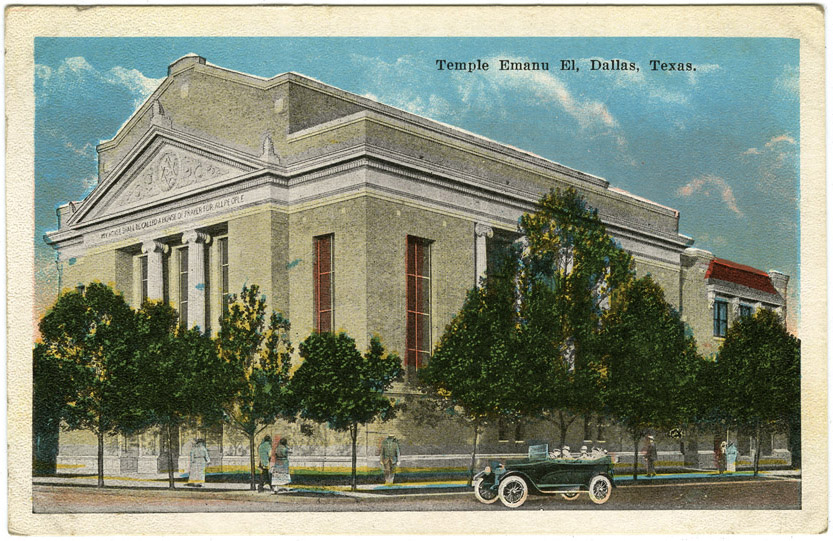7.4 Dallas, Texas
Temple Emanu-El, South Boulevard
Hubbell and Greene, architects, 1917
Seawall Specialty Co., Galveston, Texas, publisher; no date
Depicted here is the third home of the Emanu-El (God is with us) congregation in Dallas, Texas, which moved to this new classical-style structure in 1917, following Jewish migration away from the old downtown.
Emanu-El’s first home was on Commerce Street (1876–98). The congregation then moved to Ervay Street (1899–1917), and then to South Boulevard (1917–56), to the synagogue shown on this postcard.
The Richardsonian Romanesque style of the second temple on Ervay seemed decidedly old-fashioned by 1917. Not surprisingly, the new synagogue was in the classical style, which had become the norm for Reform synagogues in the South and throughout much of the country. The building was designed by Hubbell and Greene, one of the leading architectural firms in Dallas at the time. In the new sanctuary a new seating policy was introduced that included free seating, meaning that where congregants sat was no longer based on the purchase and reservation of particular seats.
In 1957, the congregation moved to its fourth building on Hillcrest Road in North Dallas, designed by Jewish architects Howard R. Meyer and Max M. Sandfield, with California architect William Wurster as consultant. The new synagogue, with its distinctive rotunda, received an Award of Merit from the American Institute of Architects.
